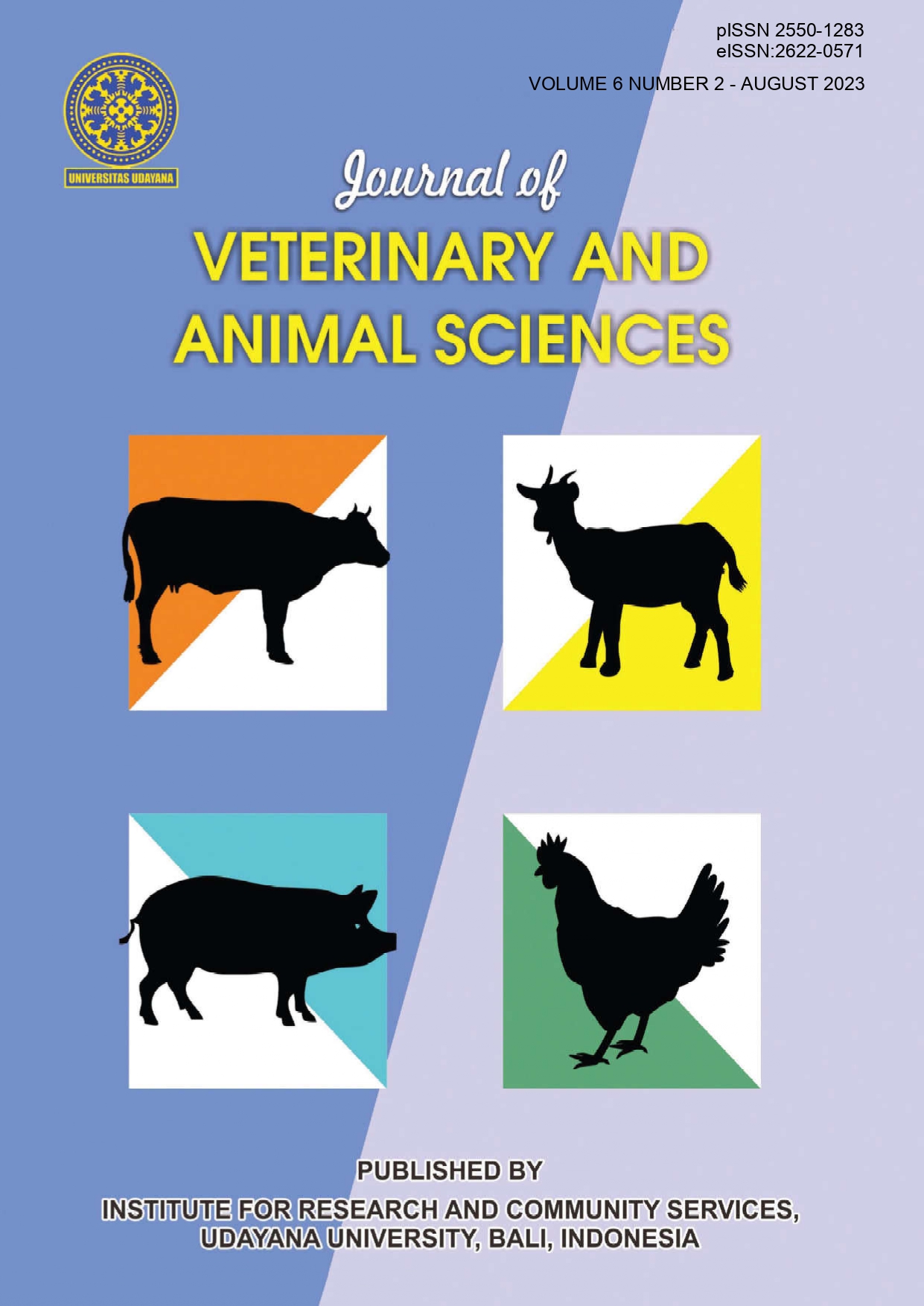Distribution and Elimination of Lead in Rat (Rattus norvegicus) Tissues
Abstract
This study aims to determine the distribution and elimination of lead levels in various tissues of rats (Rattus norvegicus). The study used 32 rats which were divided into 2 groups, namely the control group and the group given 2.00 ppm Pb-acetate. Treatment by administering Pbacetat is carried out orally every day for 30 days (phase 1). On day 31 (phase 1), 8 rats from each group were taken their blood plasma for measurement of lead levels. Measurement of lead levels was carried out using the atomic absorption spectrophotometry (AAS) method. Then the rats were necropsied and the liver, kidneys, spleen, lungs, intestines, heart muscle and brain tissue were taken for histopathological preparation. Histopathological preparations were made according to the hematoxylin eosin (HE) staining. The remaining 8 rats from each group were kept continuously for the next 30 days (phase 2), without giving Pb-acetate solution. This phase aims to determine the level of lead elimination from rat tissues. On day 61, all remaining rats were taken their blood for measurement of lead content. Then the rats were necropsied to take liver, kidney, spleen, lung, intestine, myocardium and brain tissues, the same as in phase 1.The histopathologically examination were categorized based on thehaemorrhage, inflammatory and necrotic lesions. The average of measurement result of lead content in the blood of rats in phase 1 was 0.27±0.06 ppm. Whereas the average of lead content in phase 2 was 0.12±0.03 ppm. This result showed significantly difference by variance of analize. Based on the tissue lesions, the liver, kidneys, spleen and lungs were the main tissues undergoing histopathological changes. Up to phase 2, the liver tissue still has lesions. It can be concluded that lead contamination in 30 days can significantly decrease in the next 30 days. Lead distribution can cause lesions in liver, kidney, spleen and lung tissues. But in phase 2, liver lesions were still found, indicating that liver tissue had the lowest elimination power compared to other tissues











